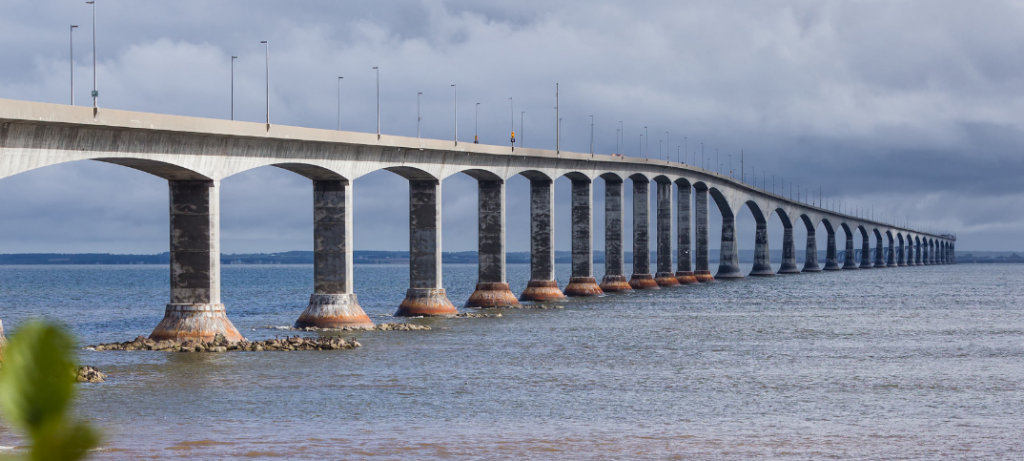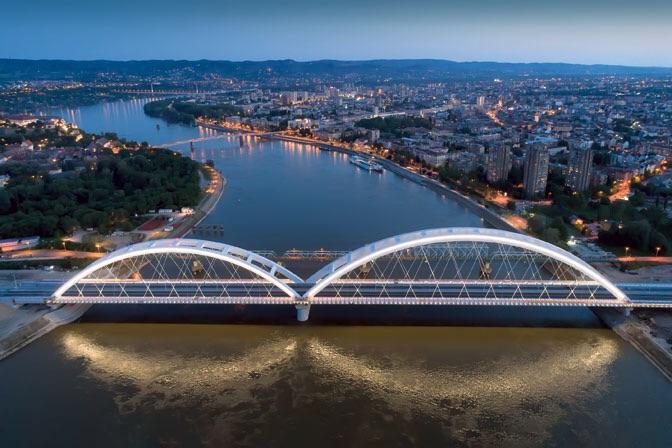The bridge is a structure that is used to cross physical obstacles in the way without closing the way. Obstacles in the sense, A river, A valley, or an ocean. There are different types of bridges with different advantages and those are as follows.
Types of bridges:
- Beam bridge
- Truss bridge
- Cantilever Bridge
- Arch Bridge
- Tied Arch Bridge
- Suspension Bridge
- Cable-stayed Bridge
Beam bridge:
This is one of the types of bridges that is the most commonly used bridge. It is the most simple type of bridge which is made with vertical piers and the horizontal beam upon it that’s why it is called a beam bridge. It can be also called a continuous bridge. Beam bridge is mostly used for the short distance unlike other types of bridges because there is no inbuilt support. The only support beam bridge has is the piers. The span of the beam bridge is not more than 80 Meters. The material used to make the beam bridge is Timber, Iron, Steel, RCC.
Also read:

Truss bridge:
A Truss bridge is a superstructure that is made up of a truss with triangle units of metal or wooden. These types of bridges can be called load-bearing structures. Stresses are also popular for bridge-building because it gives more strength than the material used. The material used to make the truss bridges are steel, reinforced concrete, pre-stressed concrete, or post-tensioned concrete. The span of the truss bridges is not fixed it can be according to the obstacles.
Also Read:
All about roadside drainage system
Standard size of master bedroom

Cantilever Bridge:
A cantilever bridge can be defined the same as the cantilever beam. The cantilever bridges are made by cantilevers that means, one end is supported and another end is a cantilever. The Swingbridge is one of the types of cantilever bridge. The material used to make the cantilever bridge is structural steel or box girders built from prestressed concrete. The cantilever bridge can be constructed in 1500 feet of the span.

Arch bridge:
The arch bridge is one of the oldest types of bridges which is generally used for the small spans to most large spans. The arch bridges are designed to transfer the load to the support of each end of the bridge from the curves instead of transferring to the straight. The basic functionality of the arch bridge is, it is a curved design and it does not transfer the load straight down but it transfers through the curves to the supports. The materials used for an arch bridge are Masonry, concrete, wrought iron, timber, structural steel, and cast iron, etc. These types of bridges can be constructed into 40 to 250 meters span.
Also read:
Directions according to Vastu shastra

Tied arch bridge:
The tied arch bridge is the child type of arch bridge, which has the same functionality as a normal arch bridge. Because it also transfers the load through the curves to the end supports. The only difference between them is that the tied-arch bridge is used in modern times. And the tied-arch bridge has an arch on each support and the suspensions on the roadways. The longest span of the tied arch bridge is 137 meters that means it will be rarely find having more than 137 meters span.

Suspension bridge:
The suspension bridge is one of the expensive types of bridges which can have the longest span than any type of bridge. The functionality of the suspension bridge is it holds (supports) the roadways with the cables. The bridges are light and have good aesthetical pleasing that means they look attractive and gives good strength. The mechanism of the suspension bridge is the cables act as a support to the road and the cables transfer the load to the poles which are the main support of the overall suspension bridge. These poles convert the tension of the cables into compression and transfer it to the ground. The image given below will clarify your idea about the suspension bridge. The span of the suspension bridge is around 2 Km or can be longer than that.
Also read:
Dog legged staircase design, dog legged staircase plan
30×40 house plan download
Top 10 small house designs

Cable-stayed bridge:
It is the child type of suspension bridge that is now the fastest developing type of bridge. It is similar to the suspension bridge which has towers and cables. In the case of a cable-stayed bridge, unlike a suspension bridge, the single tower holds all the load of the bridge. The given image will help you to understand the difference between a cable-stayed bridge and a suspension bridge. The normal span of the cable-stayed bridge is 150 to 600 meters.

I hope you understand the different types of bridges. And thank you for seeing our post. Must share this if any of your friends or relatives need to know about this. Also visit our Youtube channel by clicking this link, DK3DHOMEDESIGN.